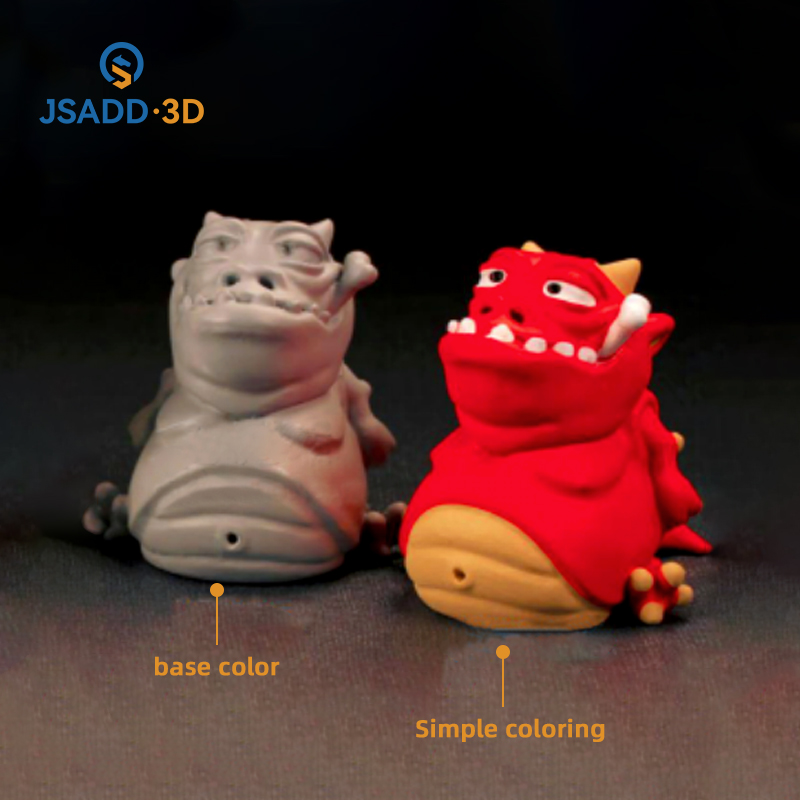The main process of 3d printing is: 3d modeling ,3d printing 3d printing post-processing As long as there are 3d printers in the 3d printing process, many people can do it, but the 3d printing post-processing really needs skills. JSADD 3D is known as the only fine coloring service provider at home and abroad, which is enough to prove its superb post-processing capabilities.
Post-processing process:
Polishing + painting + plate making (vector file ai) + physical printing;
Polishing + coloring
JSADD 3D coloring process can be divided into two types: simple coloring and fine coloring.
Simple coloring is mostly suitable for coloring industrial parts, etc., where the color requirements are not high (generally monochrome, and the color is adjusted according to the Pantone color value), such as industrial products, equipment casings, simple ornaments, etc. After the finished product is polished, it is generally a simple overlapping or addition of large color blocks, mostly single-color or double-color; spray paint is the main paint, and the paint is mainly plastic paint and industrial paint, and no gradient color is involved.
The general steps of simple coloring can be divided into two:
Base color
The base color is mostly sprayed to increase the adhesion of paint and other pigments, so that the surface color is uniform.
Simple coloring
Simple coloring emphasizes the integrity between color blocks, such as: color saturation, uniformity and thickness of color spraying, and smooth outlines of color blocks.
Fine coloring is based on simple coloring. Experienced colorists from JSADD 3D use imported hand puppet paints as well as other high-end raw materials, unique coloring process, and more than ten kinds of coloring tools and equipments to satisfy the coloring needs of clients as much as possible.
JSADD 3D fine coloring can carry out in-depth depiction from the direction of emphasizing details, textures and other surface textures, suggesting visual sense and artistry. The color can be varied and complex, which is suitable for customers with high requirements on color and texture, such as high-precision hand-made, display models, restoration and reproduction of cultural relics, 3D portraits, etc.
The fine coloring steps are as follows:
1.Base color
Use a spray gun to select a primer that is close to the color of the finished product. Generally, it is applied thinly and layer by layer. The detail part and the part with a large contrast with the overall color can be reserved first without spraying.
2.Color block
Firstly, the large-area color block is sprayed, and then the small-area color block is hand-painted, spraying and hand-painting, and the overall color drawing is completed.
3.Color adjustment
This step focuses on making color adjustments such as overlays, overtones, gradients, transitions, etc. by layering one layer on top of the other to emphasize the color structure and details.
4.Partial detail coloring
It mainly focuses on the depiction of details, such as the facial features of characters, clothing details, distressing, imitation copper and other mottled traces and lines. Through the description of details, the original image of the model is highly restored, the modeling features are highlighted, and the most realistic model is created.
5.Light sensitivity adjustment
There are two main categories: matte finish and glossy finish.According to customer needs, use matte oil or varnish for texture adjustment to create overall matte or glossy, partly matte or glossy to achieve a highly simulated model texture.
Contributor: Alisa / Lili Lu / Seazon

